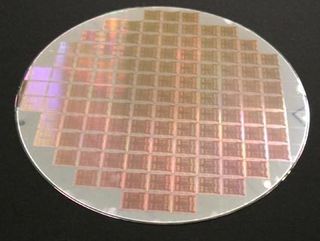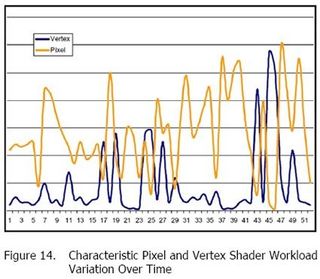GeForce 8800: Here Comes the DX10 Boom
United We Stand

Worth twice its weight in gold, a wafer with 80 graphics processing cores can deliver about twice the performance than GeForce 7900GTX (G71). A 681-million transistor count makes for a large silicon footprint, but when asked about its size, CEO Jen-Hsun Huang replied: "If my engineers said that they could double performance by doubling the amount of silicon used, I would have told them 'go for it!'"
As time has shown, doubling does not mean double performance but Nvidia seems to have struck the right balance of technology advances with silicon engineering and implementation.
Staying close to DX10 specifications, GeForce 8800GTX and 8800GTS fully comply with the DX10 standard with Shader Model 4.0, various data storage and transmitting specifications, Geometry Shaders and Stream Out. While you have seen what DX10/D3D10 compliant hardware should operate, let's look at how Nvidia gets the job done.
To start, Nvidia deviated from the fixed function design that the industry had been using for the past 20 years in favor of a unified shader core.

We have shown similar images in the past demonstrating the trend towards more pixel shading. Nvidia as well understands this trend and moved to balance the utilization needs by implementing unified shaders running threaded data streams to maximize efficiency and performance.
Nvidia said: "The GeForce 8800 design team realized that extreme amounts of hardware-based shading horsepower would be necessary for high-end DirectX 10 3D games. While DirectX 10 specifies a unified instruction set, it does not demand a unified GPU shader design, but Nvidia GeForce 8800 engineers believed a unified GPU shader architecture made most sense to allow effective DirectX 10 shader program load-balancing, efficient GPU power utilization and significantly improved GPU architectural efficiency." This logically makes the most sense as pointed out in our Direct3D 10 Preview.
Stay on the Cutting Edge
Join the experts who read Tom's Hardware for the inside track on enthusiast PC tech news — and have for over 25 years. We'll send breaking news and in-depth reviews of CPUs, GPUs, AI, maker hardware and more straight to your inbox.
Current page: United We Stand
Prev Page Holy Hardware Batman! Next Page SIMD Heaven: 128 Streaming ProcessorsMost Popular


